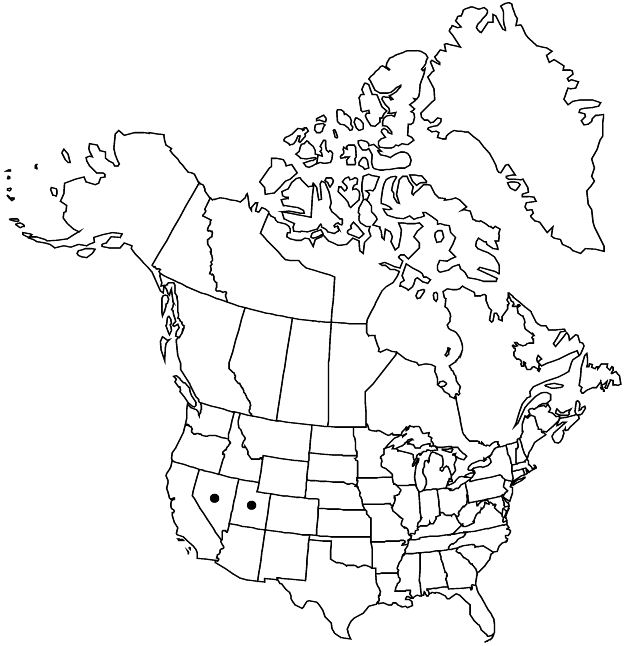Viola lithion
Brittonia 44: 300, fig. 1A – D. 1992.
Plants perennial, caulescent, not stoloniferous, 5–15 cm. Stems 1–3, ascending to erect, glabrous, on caudex from fleshy rhizome. Leaves basal and cauline; basal: 1–4; stipules unknown; petiole 1–10 cm, glabrous, sometimes finely puberulent; blade broadly ovate or deltate to broadly deltate, 1–2.5 (–2.9) × 0.6–2.2 (–2.6) cm, base usually cordate to truncate, rarely rounded, margins crenate-dentate, eciliate, apex acute, surfaces glabrous; cauline similar to basal except: stipules lanceolate, margins usually fimbriate-toothed, sometimes entire, apex attenuate or acute; petiole 1.1–3.7 cm, sometimes finely puberulent; blade ovate to deltate, 0.7–2.2 × 0.4–1.2 cm, base sometimes rounded on distal blades. Peduncles 3–6 (–10) cm, glabrous. Flowers: sepals lanceolate, margins eciliate, auricles 0.5–1 mm; petals blue to pale violet on both surfaces with yellow area basally, lower 3 purple-veined, lowest with yellow area, lateral 2 bearded, lowest 5.5–11 mm, spur white to pale violet, gibbous, 0.5–1.3 mm; style head bearded; cleistogamous flowers unknown. Capsules subglobose, ca. 5 mm, glabrous. Seeds dark-brown, ca. 1.8 mm.
Phenology: Flowering Jun–Aug.
Habitat: Seasonally wet cracks and crevices, narrow ledges of rock outcrops, shaded northeast-facing avalanche chutes, cirque headwalls, subalpine conifer zone
Elevation: 2300–3100 m
Discussion
Of conservation concern.
Viola lithion is known only from the White Pine Range in Nevada and the Pilot Range straddling the Nevada-Utah border. It is related to V. canadensis and V. flettii.
Selected References
None.
Lower Taxa
"thick" is not a number. "narrow" is not a number.
